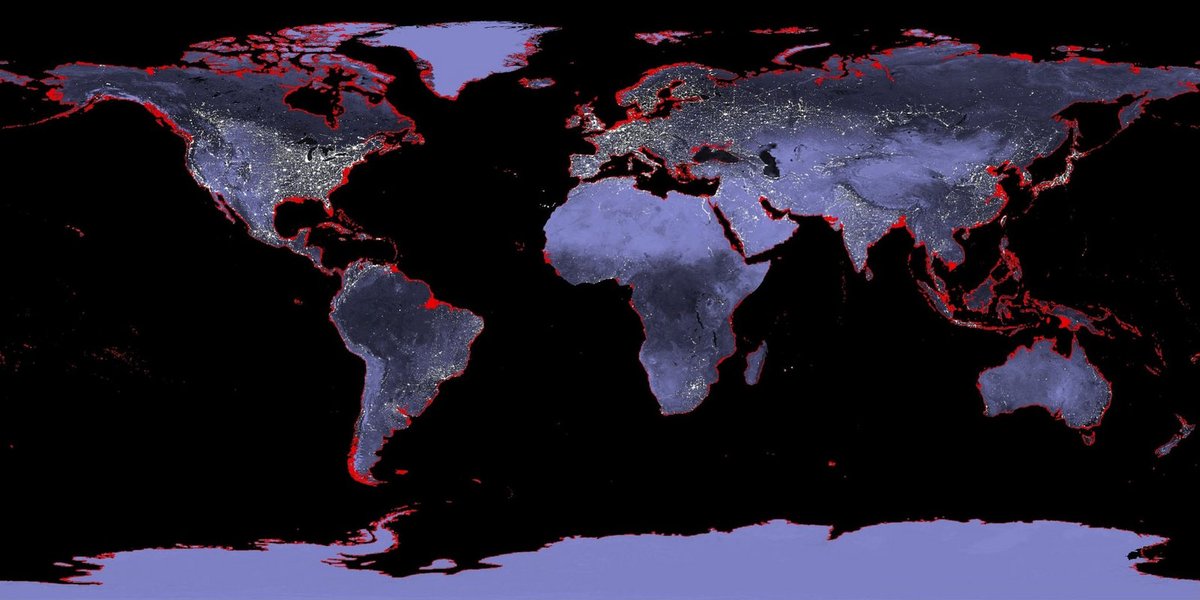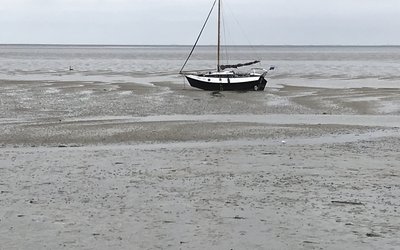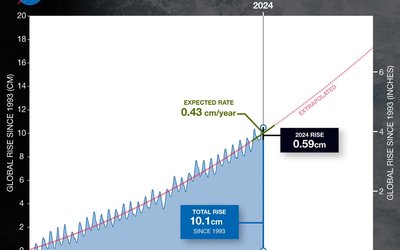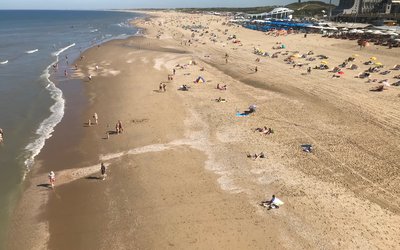Coastal erosion and coastal floods
Ambitious climate policies are needed to avoid fast sea level rise
December 4, 2017

6 metres of sea level rise threaten large parts of the world’s coasts (in red) (photo: NASA, www.flickr.com)
Drivers of sea level rise
Drivers that contribute to sea level rise are thermal expansion of ocean water, melting glaciers, mass loss of the Greenland and Antarctic ice sheets, and changes in water volumes stored on land. Recently it was shown that global sea level rise may strongly accelerate from hydro fracturing and ice cliff instability of the Antarctic ice sheet, causing significantly more sea level rise by the end of this century than presented in the IPCC’s latest assessment report. Studies that have included these new insights project sea level rise at the end of this century up to one meter higher than the IPCC estimates.
Scenarios of socio-economic development and of global warming
How fast global sea level will rise depends on the size of the processes that contribute to sea level rise. These processes in turn depend on the combination of socio-economic developments around the globe and the impact of greenhouses gases on global warming. Socio-economic developments are described in scenarios, storylines that include elements like population and economic growth, and an ambition to mitigate climate change and adapt to the consequences. Different storylines reflect different impacts on the environment. The impact of greenhouses gases on global warming is described in so-called Radiative Forcing Targets: the energy intensity that warms the atmosphere, expressed in W/m2. A high-end scenario of global warming agrees with a lot of Watts per square metre. A low-end scenario agrees with far less Watts per square metre, and hence with a strong effort to mitigate the impact of greenhouses gases on global warming. High- and low-end scenarios of global warming are 6.0 W/m2 and 2.6 W/m2, respectively.
Five scenarios of socio-economic development, the so-called Shared Socioeconomic Pathways (SSPs), have been designed to comprehensively capture varying levels of socioeconomic challenges to mitigation and adaptation:
- SSP1, a sustainable pathway: low challenges to mitigation and adaptation
- SSP2, a ‘middle of the road’ trajectory: medium challenges to mitigation and adaptation
- SSP3, a future world of regional rivalry: high challenges to both mitigation and adaptation
- SSP4, a future marked by inequality: low challenges to mitigation and high challenges to adaptation
- SSP5, on-going fossil-fuel development and high energy demand: high challenges to mitigation and low challenges to adaptation
These Shared Socioeconomic Pathways and Radiative Forcing Targets can be combined to estimate future sea level rise. This has been done in a recent study, in which also the latest findings on hydro fracturing and ice cliff instability of the Antarctic ice sheet were included.
Sea level rise without mitigation
If we would not take measures to mitigate global warming, the aforementioned socio-economic scenarios would lead to sea level rise in 2100 (relative to 1986 - 2005) that varies from 89 cm for the SSP1 scenario up to 132 cm for the SSP5 scenario. These are median values: the likely ranges (including 66% of the model results) are 57 - 130 cm for SSP1, and 95 - 189 cm for SSP5. Projections for the other scenarios are in between these values.
Sea level rise with mitigation
The scenarios of global warming (radiative forcing targets) reflect different levels of success to mitigate climate change. It appears that the level of mitigation that is being reached dominates the 2100 sea level response. For the low-end scenario of global warming, and thus the highest mitigation target that is being reached (2.6 W/m2), projected median sea level rise is 52 cm (likely range 34 - 75 cm). For the high-end scenario of global warming, and least successful mitigation (6.0 W/m2), projected median sea level rise is 91 cm (likely range 61 - 132 cm). Thus, according to this study, sea level rise in 2100 could be limited to around 50 cm (median value) if the most ambitious climate mitigation measures would be implemented in time.
Ambitious climate policies are needed
The 132 cm sea level rise in the SSP5 scenario without mitigation is a few decimetres lower than recent results on comparable scenarios. However, this study also shows that sea level could rise up to 2 m without mitigation. This highlights that ambitious climate policies are needed to avoid the most severe impacts from rising sea levels around the globe. As such, these higher estimates point to a growing risk of potentially catastrophic sea level rise by the end of the 21st century under unchecked climate change. The study also shows, however, that strong mitigation efforts could prevent the onset of the rapid dynamics that cause the additional sea level contribution from the Antarctic ice sheets. Still, even when mitigation policy proofs highly successful, sea level rise will continue well beyond the 21st century.
Source: Nauels et al., 2017. Environmental Research Letters 12.








